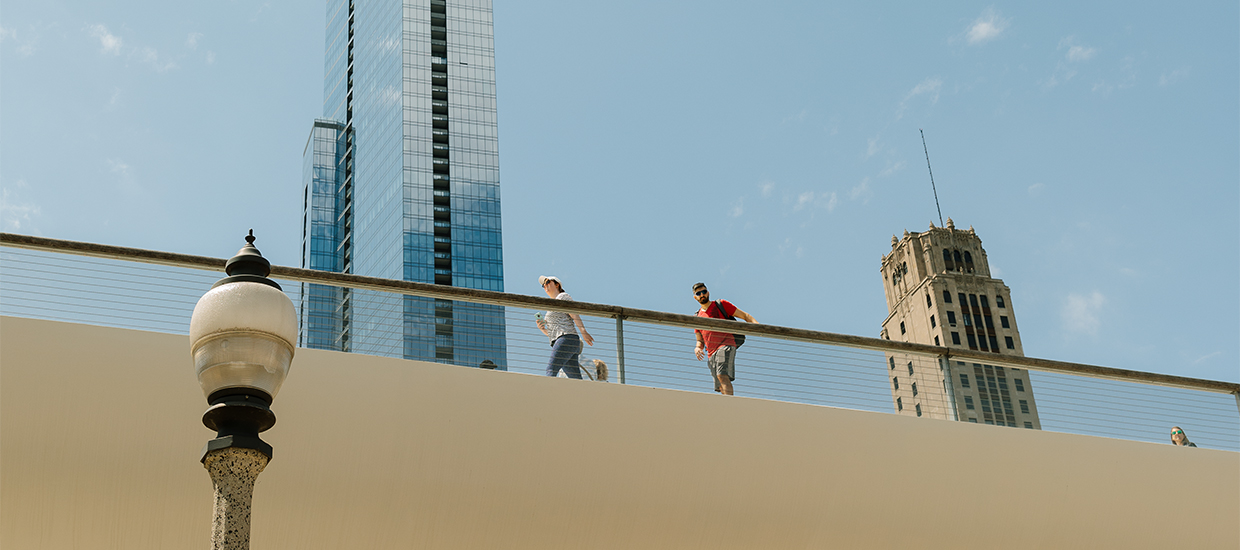Photography by Lucy Hewett
The great author Nelson Algren wrote of Chicago that “once you’ve come to be part of this particular patch, you’ll never love another. Like loving a woman with a broken nose, you may well find lovelier lovelies. But never a lovely so real.”
In the 25 years since I came here from New York City, I’ve attended graduate school at the University of Chicago, worked in the fields of HIV/AIDS, homelessness, and child abuse prevention, written eight books, and built a family. In that time, I’ve found this city to be as real as any place I’ve known, and I’ve duly come to love it. Even when Chicago falls backward, the city is constantly seeking a way to refresh, rediscover, and rebuild itself.
This spirit is perhaps most evident in the city’s great buildings. This summer, as the pandemic lingered and the streets remained unsettled, I visited a few of these architectural marvels, hoping to reaffirm my connection with my adopted hometown. Algren also wrote that Chicagoans “all had hustler’s blood,” and as I wandered around, I was thrilled to discover that remains true.
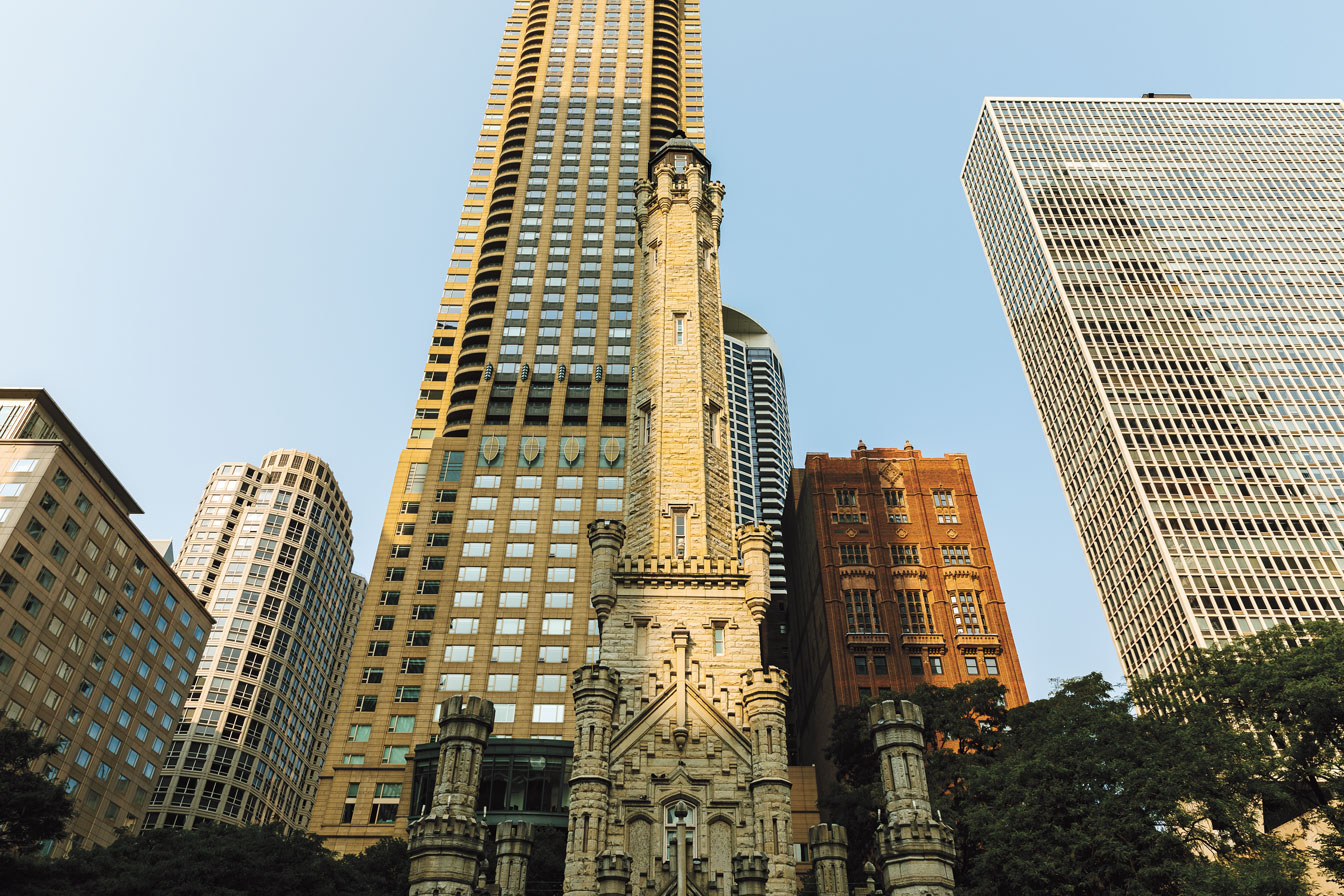
1. Chicago Water Tower
Despite its long history, Chicago can still find itself defined by an event that occurred nearly 150 years ago: the Great Fire of 1871. The fire, allegedly started by Mrs. O’Leary’s cow, ignited on the southwest side of the city and for 30 hours headed north. When all was said and done, several hundred people were dead and thousands of buildings had been destroyed. But not the Chicago Water Tower.
The Water Tower was new then. The city had erected a 135-foot-tall iron standpipe to address its water supply needs, then decided to hide it in an ornate Gothic Revival castle that was constructed between 1867 and 1869 by the prolific local architect William Boyington. The fairytale castle he designed now stands as an ode to Chicago’s fantastic aspirations, as well as an ongoing rallying cry that you won’t find on any plaque but that is still integral to the city’s DNA all these years later: “We will rise from the ashes.”
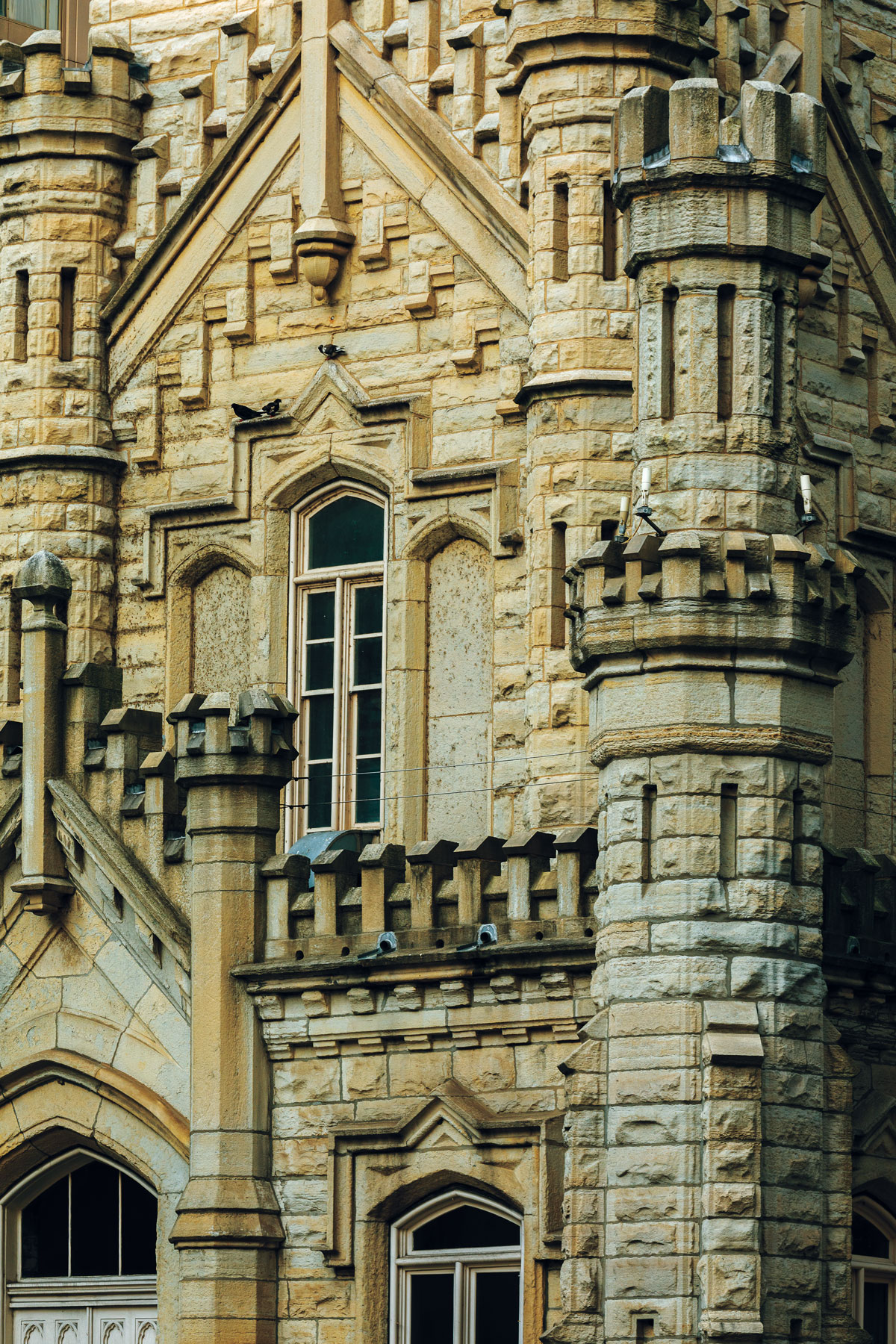
It’s not clear to me how many people are aware of this, however, as I stand in front of the yellow Joliet limestone tower today, then stroll around the park at its base. Instead, the landmark feels like an afterthought lost in the muddle of more contemporary spots, such as the Water Tower Place mall, on the retail-mad avenue known as the Magnificent Mile. People of all shapes, sizes, and addresses rush through the park, shopping bags and briefcases in hand, children in tow, heads down, thoughts elsewhere.
We live in stark times. No one knows what Chicago will look like when the pandemic is over. Yet the sight of the Water Tower serves as a comforting reminder that the city will surely rise from this disaster as well. With all this top of mind, I want to yell, “Stop! Catch your breath and look! Do you people realize how important this building is to Chicago’s definition of itself? ” But I don’t. Who, amid their daily hustle, would have the time to listen?
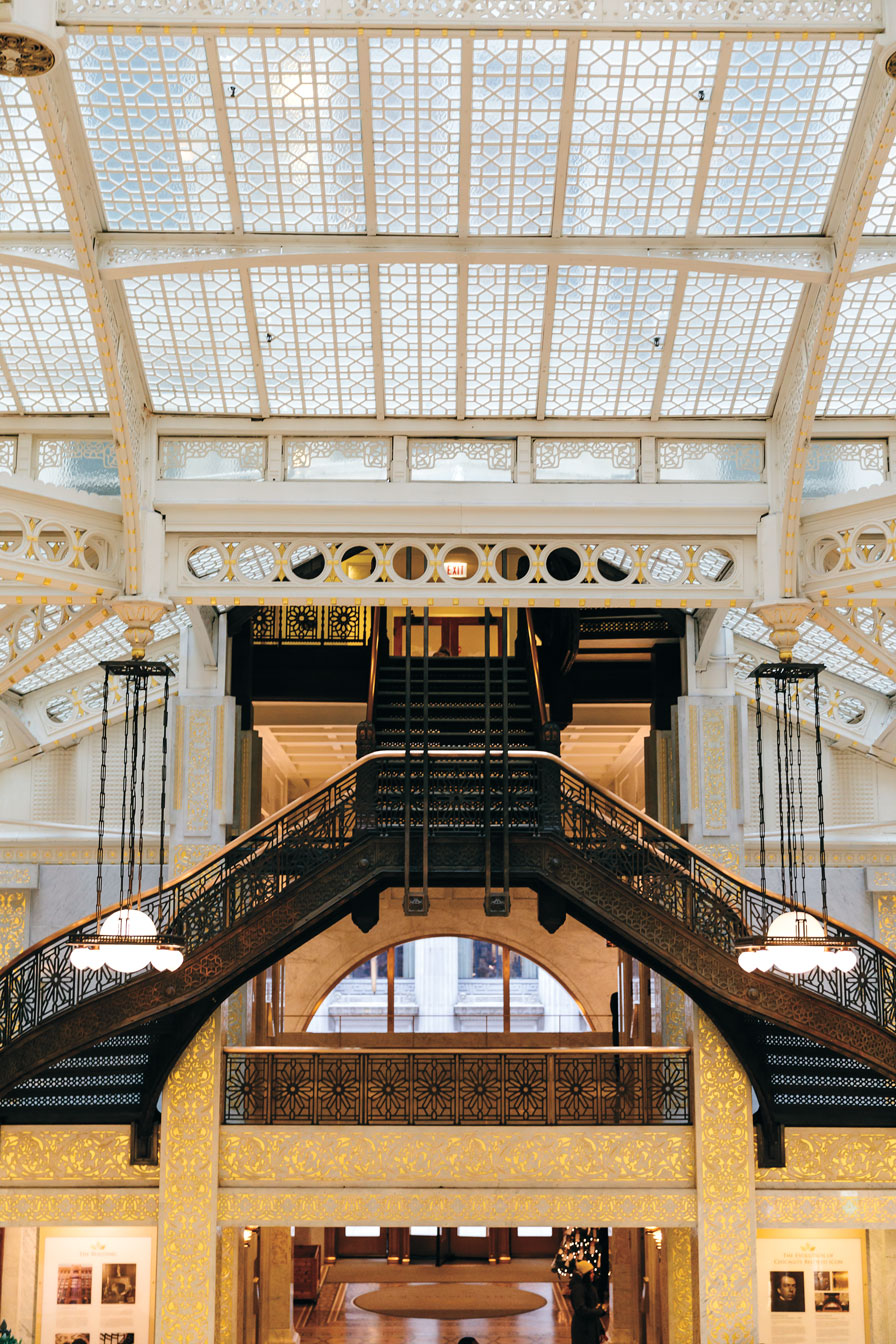
2. The Rookery
The volunteer tour guide sweeps her arms to indicate the light, space, and grandeur that is The Rookery Light Court lobby. (Yes, despite so many places being closed, public tours of The Rookery continue.) “After the fire,” she says, “people came here to make their name.”
Like many others, I came to what Algren called the “City on the Make” to make a name for myself, to work in the kind of buildings I had only read about. Places where decisions were made and people pulled the levers that make the world turn and tilt. My path started at the University of Chicago and led me through an array of offices around the Loop, and while it never brought me to a desk inside The Rookery, this building embodies both my aspirations and those of the city at large.
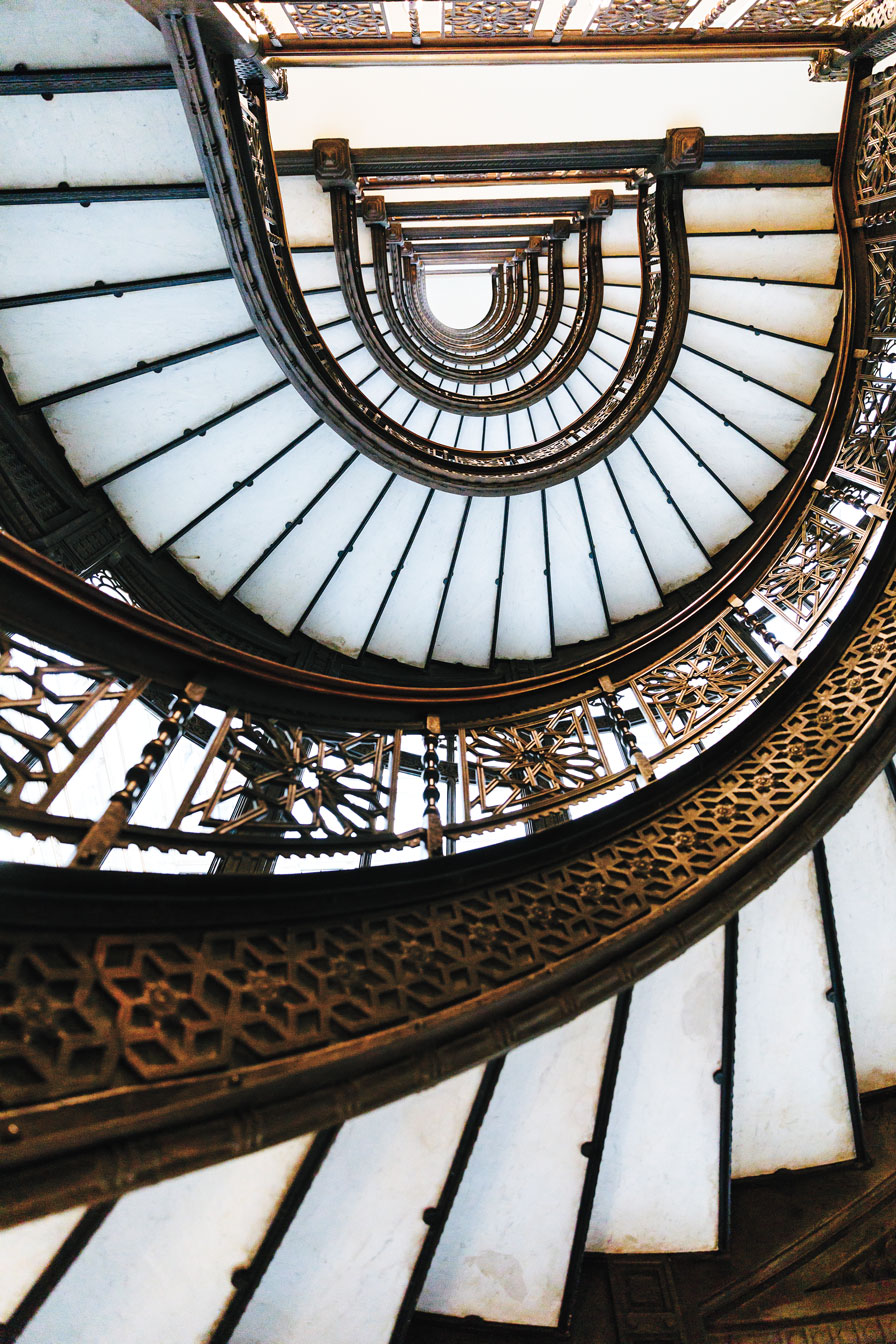
Designed in 1888 by leading architects Daniel Burnham and John Wellborn Root, The Rookery arose from the aftermath of the Great Fire as a clarion call for bespoke brilliance, a demand for the city to be recognized as a place where greatness could be achieved. Its outside is a celebration of both historical design, with Moorish and Venetian influences, and contemporary ingenuity, with load-bearing walls and a “floating raft foundation” to support its great size. Yet it’s the dynamic two-story lobby that truly causes one to gasp.
A swirling, incongruous mélange of Alice in Wonderland, Dalí, and Prairie Style architecture, the lobby dazzles as much today as it did in 1905, when it was refreshed and augmented by Frank Lloyd Wright. It is a mix of metal, urns, dazzling light fixtures, white marble adorned with gold patterns, floors that shift from mosaic tiles to glass blocks, and a twisting, surreal oriel staircase connecting the ground level and the mezzanine. All of this is captured under a glass and iron roof that provides a fantastical leaping-off point to the offices above. This is a space that demands greatness from its admirers—as I have found that the city has demanded greatness from me. Chicago insisted that I, too, create something from nothing. After all these years, I find that it still does.
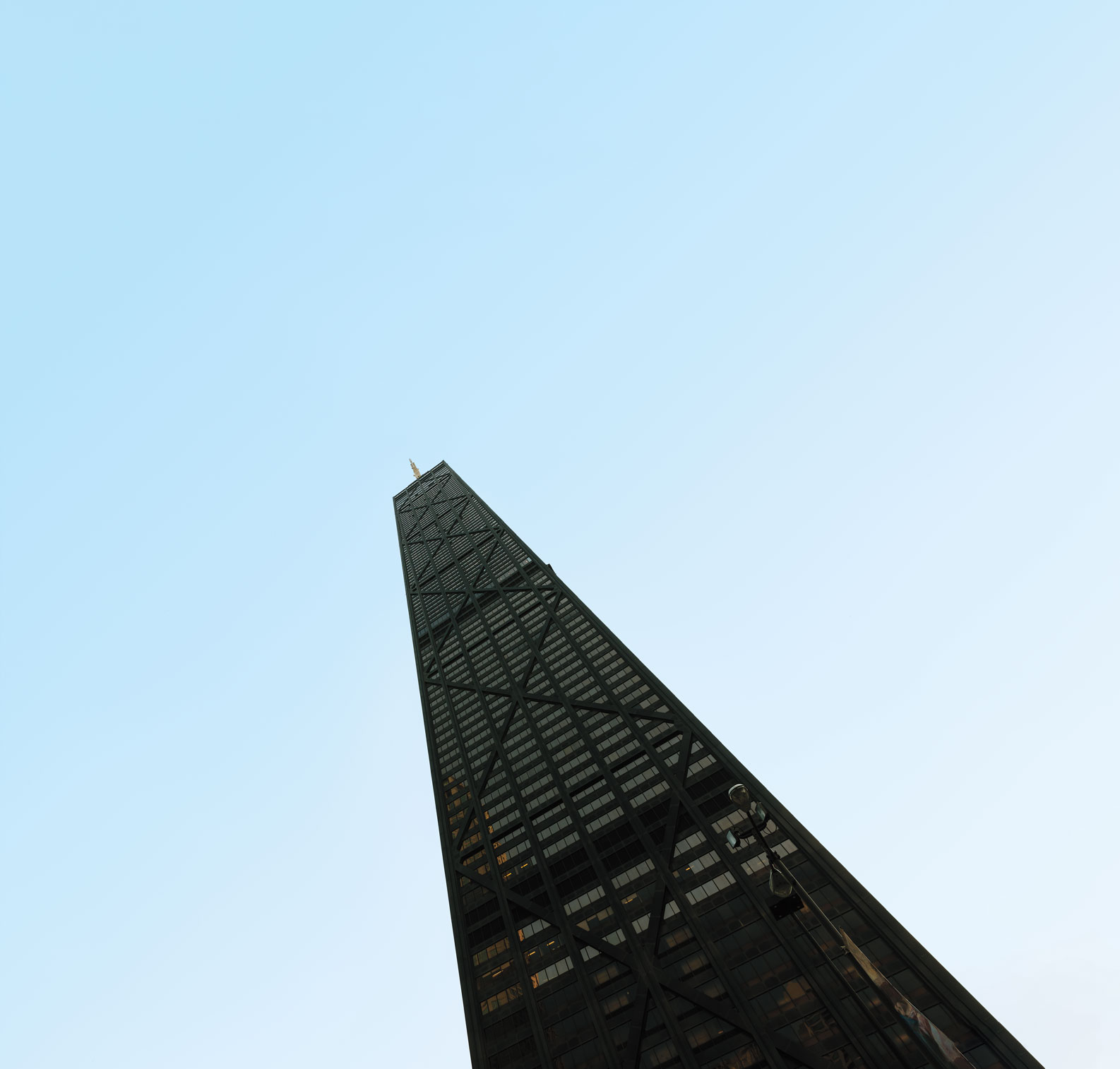
3. 875 North Michigan Avenue
It was my grandmother who introduced me to the John Hancock Center. Or so I thought. She worked as a secretary for John Hancock in New York City, and she once gave me a commemorative paperweight she had been awarded by the insurance company’s president during a visit in the 1950s. The paperweight was Lucite, with a bronze coin embedded inside it, and on one side a building that in my memory was always the Hancock Center in Chicago.
It turns out the building in that paperweight wasn’t the Hancock Center—it was the Berkeley Building (aka the Old John Hancock Building) in Boston. Even so, for me, 875 North Michigan Avenue, as the Hancock Center is now known, will always be Chicago’s grandest building. In a city that is constantly remaking itself, this skyscraper, which was designed by Bruce Graham and Fazlur Khan of the architectural firm Skidmore, Owings & Merrill, and completed in 1969, can get lost, despite its 1,128-foot height, in discussions of what’s new and next. It’s old-school and elegant, existing somewhere between the Water Tower and The Rookery and whatever is yet to come.
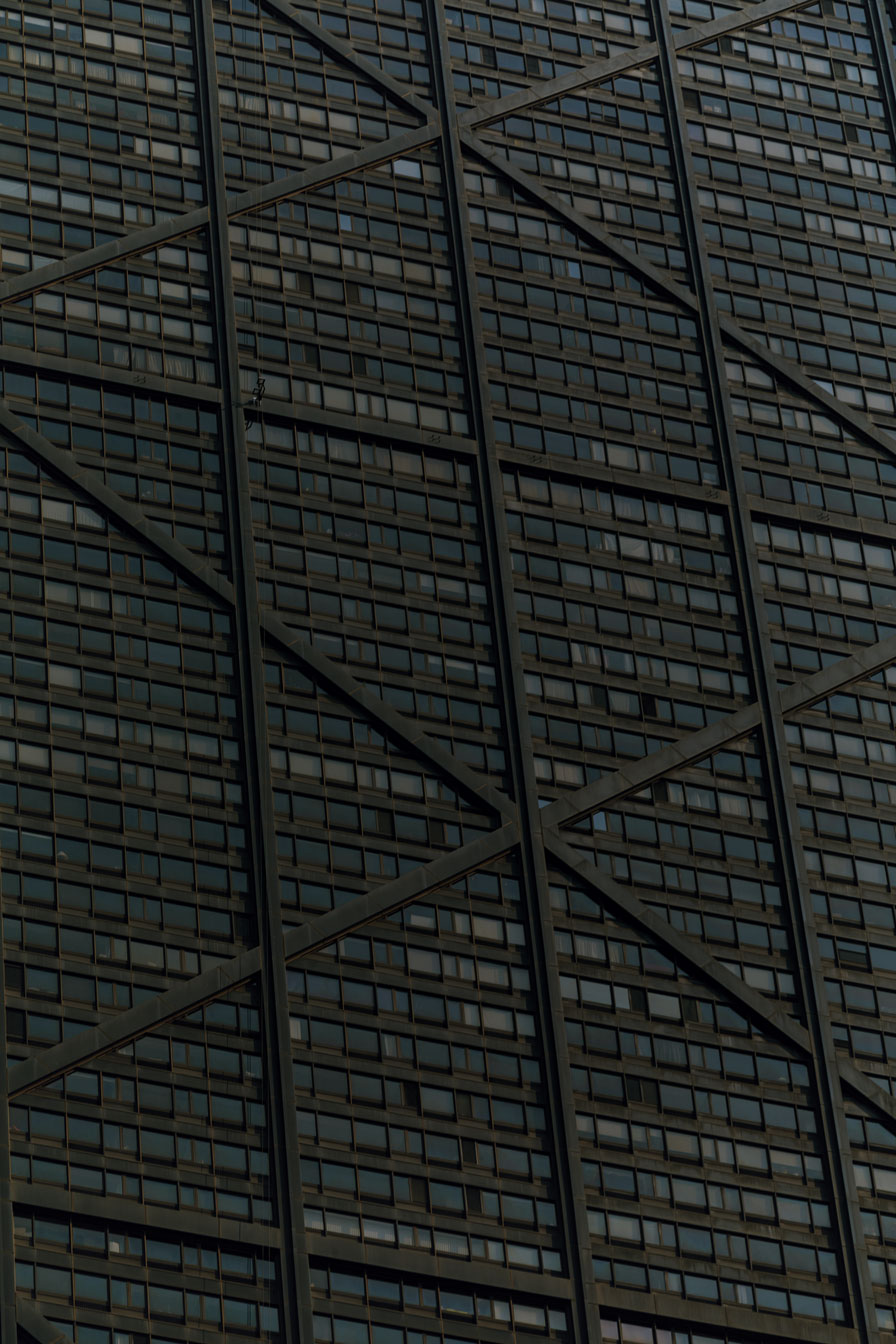
Staring up at it from the bottom, I get lost in its X-shaped, crisscrossing, lattice-like steel beams (also known as “X-bracing”), which minimize the need for internal support columns. The tapered tubular structural system allowed architects to think more expansively about how skyscrapers could be shaped, how much floor space could be preserved inside, and just how far into the sky buildings could climb.
There is also the rush of zipping toward the clouds on the elevator, ears popping, and emerging on the 95th floor at the Signature Room. The Signature Lounge, one floor higher, charges no cover and offers the chance to have a drink with views of, well, everything: east over Lake Shore Drive, Navy Pier, and the lake, which seems to extend forever; north toward Lincoln Park, Lakeview, Wrigleyville, and beyond; south, through the Loop’s densely clustered buildings of various shapes and heights; and west, where the world slowly flattens to the plains.
Here, you’re above that world, and if you allow yourself to linger, it’s easy to believe that anything is possible.
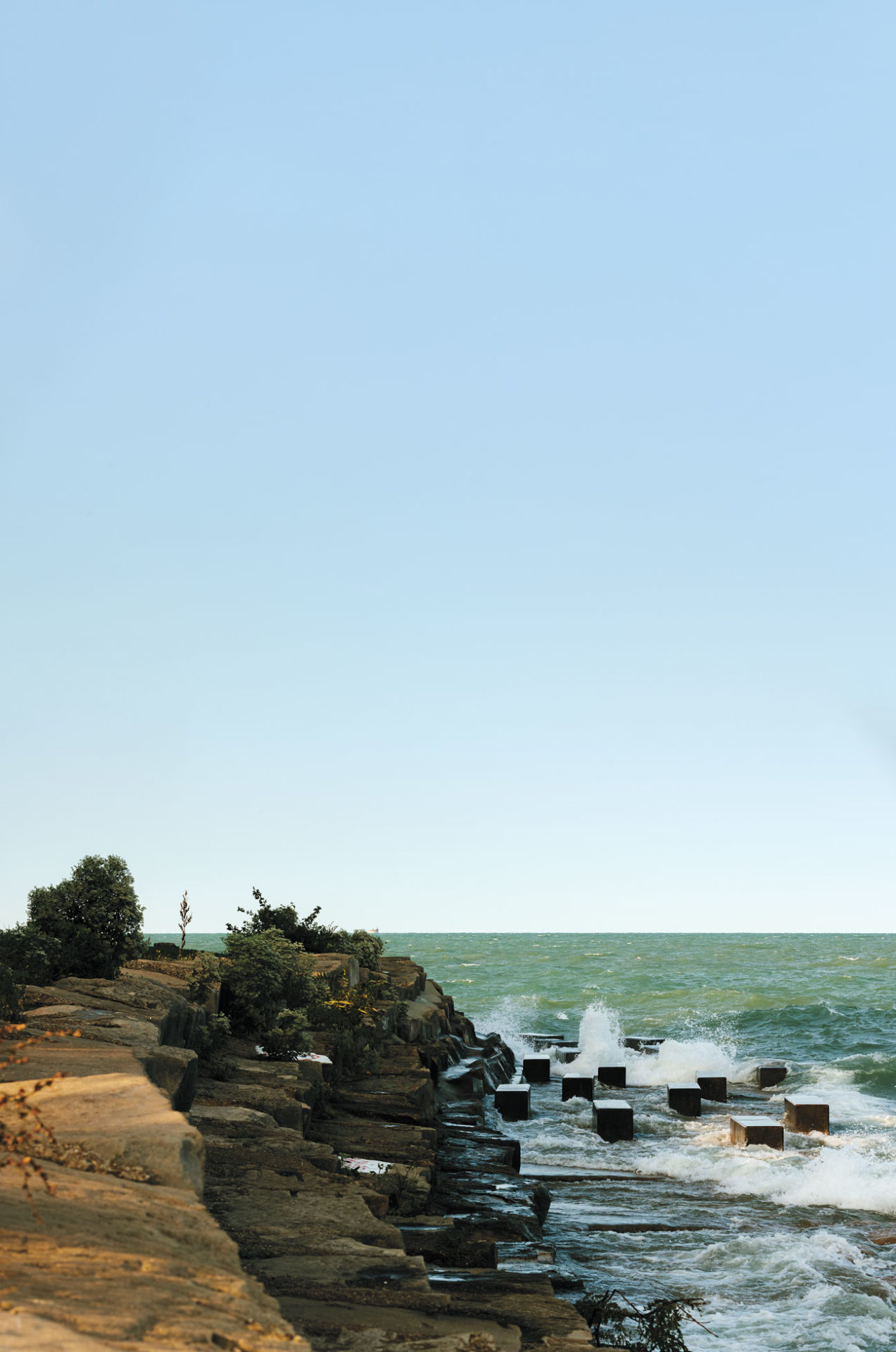
4. Promontory Point
Do we sometimes need to look back so that we can look forward?
I’m ruminating on this as I approach Promontory Point, located at the south end of Burnham Park (named after the architect of The Rookery, who was also the designer of the 1893 World’s Columbian Exposition and the 1909 Plan of Chicago) on the city’s South Side.
Even if I don’t find my way to the South Side often anymore, my Chicago journey started here. For two years I traveled to Hyde Park from where I lived on the North Side to attend classes at the University of Chicago’s School of Social Service Administration, a sleek building designed by the renowned modern architect Ludwig Mies van der Rohe. The South Side, as I discovered then, is often overlooked when we talk about what makes Chicago special—a function of who is allowed to tell the story of this great city, something I—a white, cisgender, middle-aged male author of privilege, connections, and access—am well aware of as I write this.
Promontory Point, however, offers a space for all. Its man-made peninsula juts out into Lake Michigan, both following and creating the sine curve undulations of the shore beneath the layered rocks known as “council rings.” These are covered with groups of people of all sizes, cultures, and races—as befits life on the South Side and amid the academic environs of Hyde Park jumping from rock to rock, chattering and picnicking.
This park, which allows for both social interaction and solitary contemplation of nature, was designed in 1937 by Alfred Caldwell, following the 1933–34 World’s Fair, with support from the Works Progress Administration—a program that provided work to my grandfather and stability for his family during the Depression. I wonder, will similar policies focused on public good arise from our current moment? So far, I’ve heard no aspirational discussions of how public works can support the unemployed or build things both great and necessary during this period of loss and fear. Yet, to look back, here and now, is to know that investment in community during times of retraction and destruction pays rich dividends, both in the present and the future. It involves believing in what might be and looking beyond the immediate state of the world something Chicagoans know better than most.
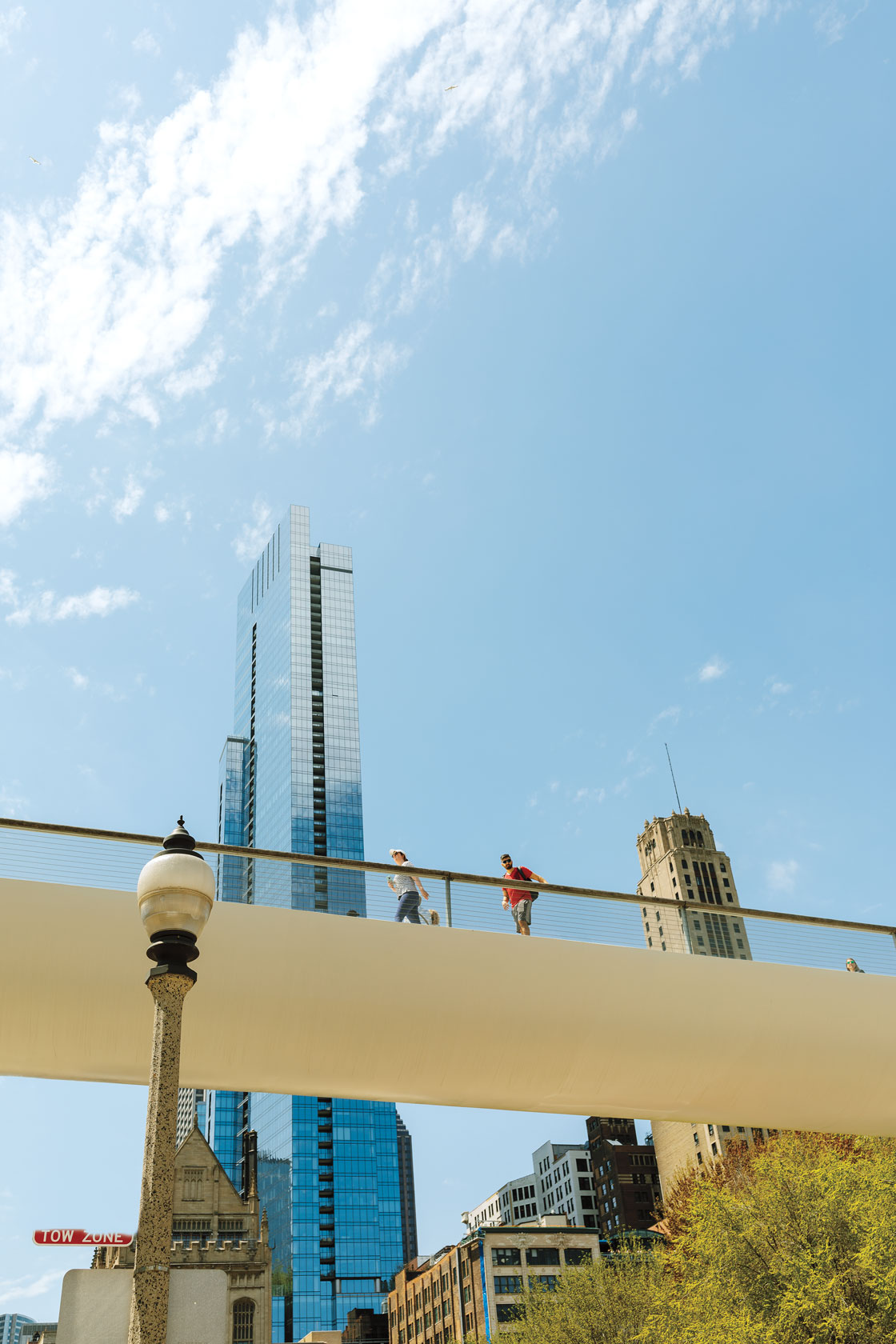
5. Nichols Bridge
The Nichols Bridgeway exists on a plane all its own, seeming to defy gravity. Designed by famed Italian architect Renzo Piano and completed in 2009, it carries pedestrians from Millennium Park to the Modern Wing of the Art Institute of Chicago (another Piano creation). It also stands as the most recent example of how Chicago views itself: forward-thinking and never settling for fly-over state clichés about how we prefer the bland, easy, or simple—not when something more celebratory is possible.
As with the Water Tower, The Rookery, and the Hancock building before it, the Bridgeway emerged from the need to solve a practical problem and the desire to do it in a fantastic way that no one had tried before. In this case, the question was, How does one move between two worlds—Millennium Park and the Modern Wing—while avoiding the traffic and crowds of Michigan Avenue? The answer: a minimalist, freestanding, anti-slip, heated piece of floating public art.
Aside from its practical and symbolic significance, the Bridgeway also serves to showcase the city, with sublime views of the avenue, the lake (always the lake), and the park. The park itself is a reclamation project, overseen by the second Mayor Daley, that refreshed a once mostly deserted and decrepit urban space by introducing Wrigley Square; the sculptor Anish Kapoor’s Cloud Gate, aka “The Bean”; Jay Pritzker Pavilion, Frank Gehry’s mind-bending band shell; Lurie Garden, a veritable oasis beneath the Bridgeway; and Crown Fountain, artist Jaume Plensa’s pair of 50-foot glass block towers that bookend a shallow reflecting pool and project video portraits of a range of Chicago denizens for all to see.
While it may be a tad on-the-nose to point out that bridges make connections, the Bridgeway does indeed link two of Chicago’s grandest institutions and the modern, innovative way in which it does so once again invokes the city’s bold vision of itself.
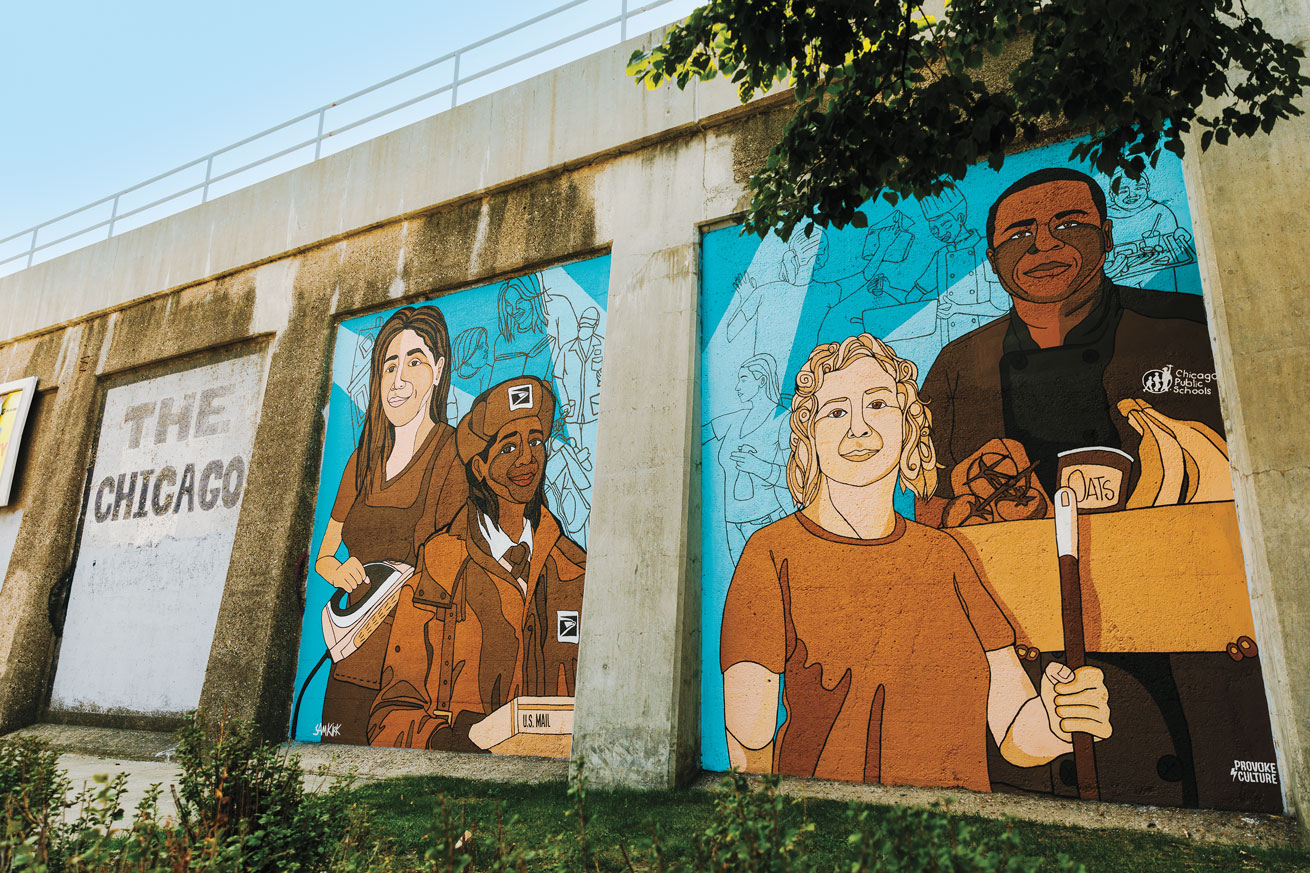
6. The B_Line
Like all things in this city, the B_Line illustrates the ways Chicago has been, and will be, an ongoing, explosive experiment in inequality and re-creation.
The original Hubbard Street Murals project began in 1971, under the direction of School of the Art Institute of Chicago graduate Ricardo Alonzo. As Chicagoans pushed back against racism, public art became entwined with social issues, and Alonzo was inspired to create a message focused on the environment and wildlife. He received city funding and employed students to create murals along the concrete train viaducts on Hubbard Street, west of the Fulton Street Market meatpacking district. In 1979, the funding ran out, and Alonzo took a job in Arizona.
Over the ensuing decades, the murals faded, despite several efforts to revive the project. Yet a living, breathing street art museum was always there, waiting to be rediscovered. With the Fulton Market District seeing tremendous growth—in the form of bars, hotels, and tech businesses—in recent years, B_Line chief curator and managing director Levar Hoard sought to update the murals as well.
Inspired by Miami’s Wynwood Walls, in the last three years Hoard has brought in 75 artists from across the city and the world to share their visions. The viaduct walls now bear a swirling mass of styles and colors, with smiling moons, birds in many shapes and sizes, children with big ears and furry pajamas reminiscent of Where the Wild Things Are, portraits of Frida Kahlo, homages to Warhol and Lichtenstein, and much more. The participating artists, including Muebon, Afrokilla, Felipe Pantone, Eva Carlini, and Sick Fisher, demand we pay attention to people and ideas we might otherwise ignore. Most relevant, perhaps, in our current moment is a brand-new mural by celebrated Chicago artist Sam Kirk that features four frontline workers—Latino Union of Chicago’s Veronica Sanchez, postal worker Carilla Hayden, domestic worker Maggie Zylinska, and school lunchroom manager Juan Burrell.
These works, both in their aspirations and their rootedness, remind us that while Chicago continues to face myriad challenges, it’s a city where innovation, creativity, and authentic voices can bloom. A city where people of all backgrounds, and from all places, can make a name for themselves—when given the space and opportunity to do so.
